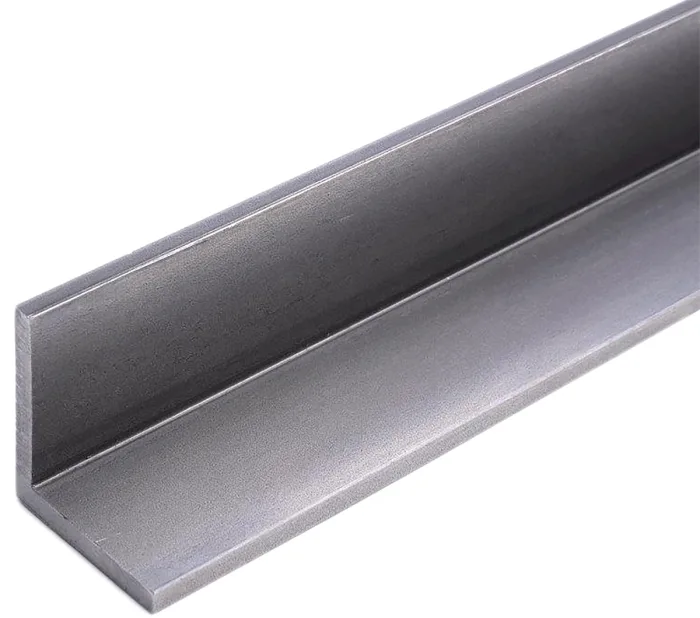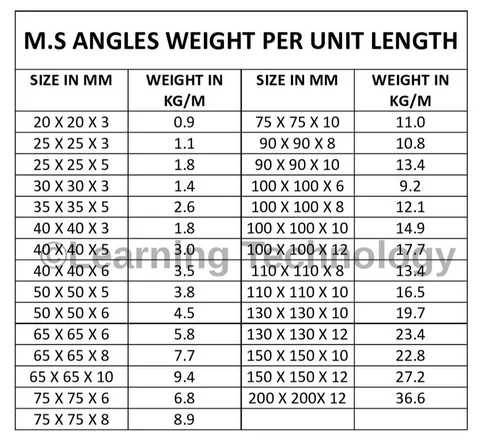What are mild steel angles, or ms angles?
Before discussing how to calculate the weight of ms angles, let us first understand what they are:
Mild steel angles, mostly known as MS angles, are L-shaped cross-sections. Factories bend a single piece of mild steel to create these angles. The tension part of the L-shaped angle is known as the web, and the compression part of the angle is known as the flange.
Below are a few important characteristics of the mild steel angles:
- L-Shaped Profile: The angle can come with symmetrical or asymmetrical legs, making it suitable for various applications.
- Versatility: These angles can be used for various applications and different tasks, including construction and manufacturing. They are used in construction to provide good stability and reinforcement for the structure.
- Strength, ductility, and weldability: MS angles have sufficient load-bearing strength with good ductility and can be easily welded at the same time.
- Standard sections: they come in standard sections, which makes the design and construction a lot easier.
The following characteristics make mild steel a fantastic material for a variety of applications:
- Due to its high degree of ductility, it may deform without breaking or suffering any damage.
- It has a high degree of energy as well as a high level of toughness.
- Rusting mild steel plates is not a tough process since it is corrosion-resistant.
- It grows stronger and more efficient as the temperature rises.
Steel typically has a tensile strength of 50,800 to 60,900 pounds per square inch, which is adequate to hold cars across a bridge or people and equipment within a structure.
Mild steel has a low carbon content (about 0.05–0.25%), making it ductile and easy to form.
The most typical uses for mild steel angles are as follows:
- Construction: MS angles are frequently employed to give structural support and reinforcement while building buildings, bridges, and other structures.
- Manufacturing: They are employed in constructing different frameworks and components for manufacturing procedures.
- Engineering: When structural stability and support are crucial, MS angles are used in engineering projects.
- Infrastructure: When building projects, including the construction of roads, trains, and power plants, MS angles are used.
How do I calculate the weight of MS angles?

Formula to calculate the weight of MS angles:
Basically, if we want to obtain the weight of anything, we multiply its density by its dimensions.
Density of steel angles = 7850 Kg/m3 = 7.85 kg/cm3
Weight (W) = 7.85 * V
where: W is the weight of ms angle in Kg
V = volume of ms angle = area * length
Fortunately, there are tables that exist and can be used to calculate the weight of ms angles directly. The weight is given in kg/m and if multiplied by the length of the angle, the total weight can be obtained.
Example:

Example: calculate the weight of a 6 m length angle of section 50*50*6
Weight / m = 4.5 kg
Total weight = 4.5 * 6 = 27 kg.
